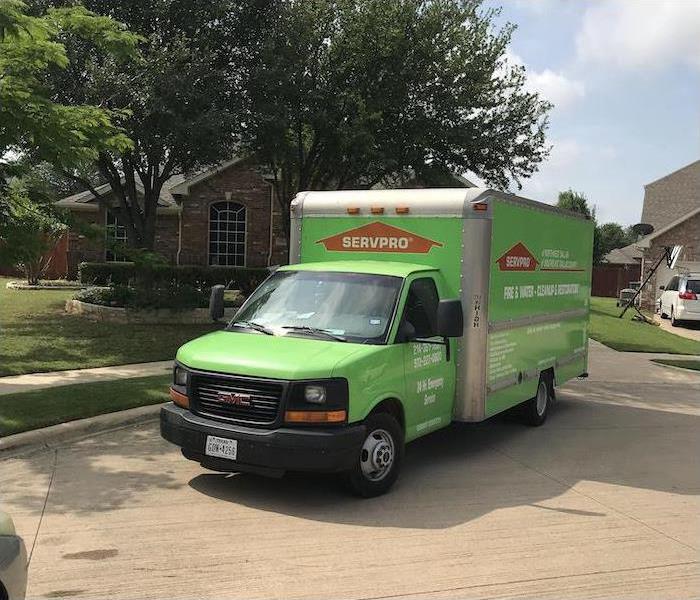When a Dallas Home Sustains Mold Damage
2/3/2023 (Permalink)
 Don't panic if you see mold damage at your Dallas home or business. Contact SERVPRO, and we will remediate the damage and offer prevention tips.
Don't panic if you see mold damage at your Dallas home or business. Contact SERVPRO, and we will remediate the damage and offer prevention tips.
SERVPRO Offers Information on Mold Checks, Protection, and Risks at Your Dallas Home
You have probably always thought of mold infestation as a straightforward situation whereby your home is either contaminated or not. However, there is much more that you need to know about mold to manage contamination at your Dallas property. Understanding its risks and spread patterns is essential information.
One of the standard responses when a Dallas home shows mold damage signs is clean up to remove debris, soiling, and resolve any odor issues. The correct approach is necessary to avoid aggravating the problem or endangering the people handling the task. SERVPRO's crew of IICRC-certified applied microbial remediation technicians (AMRT) performs cleaning safely and uses the opportunity to teach the homeowner about different mold-related issues.
Some Crucial Information to Learn Includes:
- Mold inspection
- Limiting the spread
- Dangers of exposure
Since the spores that trigger contamination are omnipresent, their presence is normal or elevated. Elaborate remediation is necessary when there are high mold levels. Drying any wet patches and airing the property is sufficient to stop the development under other circumstances. In many instances, it is easy to tell when there are elevated mold levels because of vast swathes of spots, discoloration of surfaces, and significant deterioration of wood. Organic materials can be affected in structural areas and contents like furniture exhibiting signs similar to rot. Even when only a few sites show signs, it might not reveal the whole story. An inspection helps establish whether there is hidden mold.
Mold Inspection Involves Several Steps
- Checking for hidden moisture
- Confirming material deterioration levels
- Identifying the spread patterns
When performing inspections and remediation, our SERVPRO technicians follow the best practices defined in the S520 standards manual provided by the Institute of Inspection, Cleaning, and Restoration Certification.
Understanding the Risks of Mold Exposure
When mold exhibits minor signs such as patches or discoloration and a musty smell, it is easy to clean and dry the affected areas to resolve the problem. Although cleaning is a viable solution, the specific approach used matters since it influences its effectiveness. The best methods use minimal moisture and create limited debris since wetness is the main trigger for mold development. A process that contains or does not release significant waste into the air is essential.
Since avoiding disturbing mold or wetting materials is not always possible in every case, other alternatives are necessary. SERVPRO crews look for ways to counter the effects of disturbance and moisture, thus minimizing the risks. As the first line of defense, our technicians wear appropriate PPE, including respirators, to avoid inhalation, especially when doing demolition as part of the restoration effort. Having sufficient drying equipment like air movers and dehumidifiers helps counter the development of moisture issues since we can dry any surfaces or materials left wet during cleaning. We select dehumidifiers based on their drying capabilities and the level of airflow it creates. Highly effective varieties like LGR and models with low airflow are a top pick.
Having the correct information eases mold damage remediation. You can rely on SERVPRO of Southeast Dallas County for appropriate solutions that address contamination "Like it never even happened." Call us at (972) 227-0800.






 24/7 Emergency Service
24/7 Emergency Service